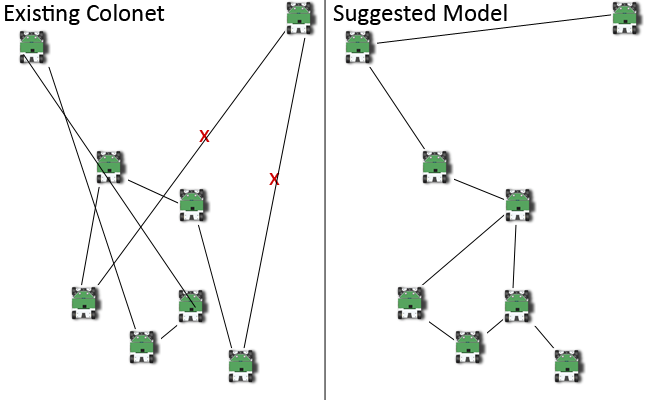Colony Scout Wireless Communication¶

As a (software) upgrade from the current token-ring/ad hoc mesh network used by ColoNet, a geodesic packet forwarding network utilizing the existing XBee modules is suggested. This network would allow robots to communicate over a large area where some robot nodes are too far apart for direct communication.
The current model assumes all robots will remain in range with their token neighbors. This is in conflict with the future goal of long range communication over a wide area. Care needs to be taken that the increased computational requirements for the network do not compromise the communication efficiency of the current model.
Methods of Accomplishment:
- Broadcast at 50% or lower signal strength, adjusting as necessary
- Measure incoming signal strength, choose strongest neighbor
- Decentralized control to ensure no robot is left out of the network
- Poll sensors at a low frequency to ensure optimal connectivity
Caveats:
- Multi-directional structure incurs the risk of loops
- Requires greater computation and processing time
- Requires revision of existing packet protocol
Additional Thoughts:
In the current system, when a robot moves out of range or can not be reached it is eliminated from the network. Since eliminating a robot from the network sacrifices any data from that robot, a more robust design might require a robot to attempt to move back into range of other robots or maximize the power of its broadcast signal.